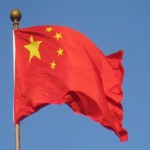IDR Blog
Nepal-India Relations: A View from Kathmandu

A somewhat long meeting between Nepal’s Prime Minister KP Oli and Secretary of India’s Research and Analysis Wing (R&AW), Samant Goel, on 21 October 2020 continues to trigger a debate in Nepal’s political circles about openness—or lack thereof—in Nepal-India relations.
Oli, who hosted the meeting, has been criticised—even by his own party—of not only breach of protocol and diplomatic norms, but also for meeting with the intelligence chief rather than a diplomat or senior political leader at a time when Nepal-India relations are their lowest ebb. This comes after New Delhi and Kathmandu published new political maps, with both sides including the 370 sq km area of Kalapani, Lipulekh, and Limpiyadhura in their respective versions.
Oli clarified that he met Goel not in his capacity as Secretary (R), but as Prime Minister Narendra Modi’s special emissary. The territorial dispute has soured bilateral relations which have suffered an intermittent dose of irritants: India only ‘noting’ but not recognising Nepal’s new constitution promulgated in September 2015, and the border blockade that created enormous shortages and hardship for the Nepali public for nearly five months.
Nepal’s journey to radical politics and a prolonged transition began in 2005-06 when the Maoists—the ultra-left force that had been leading the insurgency against the state for a decade at the time—and seven major left, democratic, and regional (Terai or plain-centric) political parties were brought together under India’s mediatory role. The goals charted by the deal reached in New Delhi in November 2005, commonly known as the 12-point agreement, were the end of absolute monarchy, consolidation of peace and democracy, and economic prosperity. In April 2006, in his last declaration as the Monarch, Gyanendra Shah said that Nepal would have a new constitution written by an elected Constituent Assembly. Shah was put under suspension soon after and the monarchy abolished in May 2008.
The constitution declared Nepal a federal democratic republic and a secular state. It is however contested by a huge, although unorganised, opposition of dissenters, not just for its vagueness about many crucial issues such as centre-state relations, but also the way in which the only Hindu kingdom in the world was declared a secular republic without involving the people directly, or through a referendum. In October 2020, the government secretly issued a circular that the country will henceforth be identified only as ‘Nepal’, without using the terms ‘secular’, ‘federal’, and ‘republic’ in both internal and external communications.
This indicates major problems within Nepal’s domestic politics, which have manifested in the brewing dissent against KP Oli’s government that secured a nearly two-third majority in parliament less than three years ago. Nepal is nowhere near achieving economic prosperity, consolidated peace, democracy, and political stability as envisaged by the 12-point agreement. There are also signs of visible distrust and uncertainty in its relationships with India and China, its immediate neighbours, and the world outside. The distrust between Nepal and India is mutual, and it puts both sides’ diplomacy to the test. Will the future relationship conform to the rhetoric often parroted by both, which is of Nepal and India’s common civilisational, cultural, and historical links leading to a shared destiny?
The heat and dust raised by Goel’s visit to Nepal must thus be understood in context. Former Secretary (R) PKH Tharakan played a crucial role in bringing Nepal’s eight parties to agree on a common agenda 15 years ago, in collaboration with the Ministry of External Affairs (MEA). Why then has his successor’s visit raised such doubt and resentment in Nepal? The answer is China. Between the radical changes ushered in 2006 and now, China has emerged as the most influential actor not only in Nepal’s investment and development sectors, but also as a key factor in Nepal’s internal politics, thus displacing India.
India’s mediation for change in Nepal, and its successful lobbying of endorsement by major Western powers, mainly the US and the European Union (EU), was seen as a matter of strategic concern by China. A suspicious China began making deep inroads into Nepal and magnifying investment manifold, across a range of crucial sectors: hydro energy, trade and investment, post-earthquake reconstruction, and tourism. It has been the biggest FDI contributor in Nepal for four years in a row.
China also exploits India’s perceived negative image in Nepal as an external force that ‘interferes too much in internal politics’, and a development partner that has a record of poor delivery compared to pledges. Further, there is still skepticism about international motivations since the monarchy, a party to the conflict, was kept out of the peace accord signed in November 2006.
General MM Naravane, India’s Chief of the Army Staff (COAS), visited Nepal less than a month after Goel. The next visit is scheduled to be by Foreign Secretary Harsh Vardhan Sringla. However, whether these engagements will re-initiate a culture of dialogue and be effective in resolving bilateral tensions amicably and to mutual benefit remains to be seen. India must realise that the management of internal politics is Nepal’s own sovereign business—but certainly with the commitment that it will not allow its territory to be used in detriment to India’s core or vital interests.
Courtesy: http://www.ipcs.org/comm_select.php?articleNo=5741




